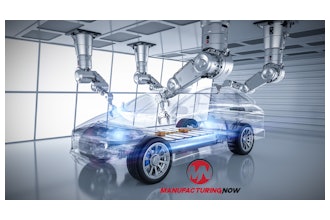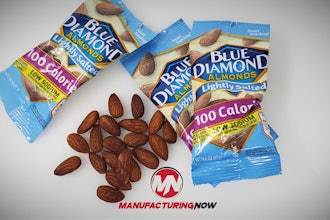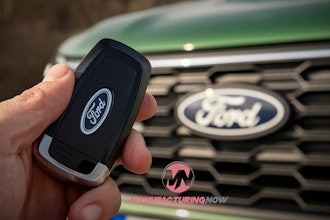BirdBot a Baby T-Rex
Researchers from the Max Planck Institute for Intelligent Systems and the University of California-Irvine have created the BirdBot.
But this most recent bit of biomimicry boasts the characteristics of no ordinary bird; in fact, it doesn't even fly.
According to the researchers, the ostrich's gait is a prime example of evolutionary selection since even the Tyrannosaurus Rex had a similar running style 66 million years ago.
The ostrich, a "mechanical wonder," weighs about 220 pounds and can reach up to 35 mph. It can also stand with bent knees for an extended period without tiring -- something not so easy for humans of a similar size. The researchers suggest that this is possible due to a unique coupling of the leg and foot joints. If the BirdBot could replicate it, it could lead to more energy-efficient robotics.
The researchers built a robotic leg modeled after the flightless bird. The foot features no motor: only a joint with a spring and cable mechanism. The foot is mechanically coupled to the rest of the leg's joints through cables and pulleys. Each leg contains only two motors at the hips, which swing the legs back and forth. A small motor flexes the knee joint to pull the leg up. In tests, the BirdBot cut energy consumption by 75%.
And the design should scale, so we could soon see robots as giant as the Tyrannosaurus Rex walking around consuming very little power. While it would be a perfect fix for current supply chain problems, it's also the backstory to Jurassic Park, if you buy into the whole "they're just really well-made robots" theory.
Gene-Editing Fights Addiction
CRISPR gene editing has incredible potential. We recently saw it used in the most successful xenotransplantation application, when a pig heart was transplanted into a man. Now, researchers from the University of Chicago are using the tool to help fight addiction.
The researchers harvest skin stem cells from a patient and then modify them using CRISPR gene-editing to inject genes that reduce your motivation to take or seek alcohol. The cells are grown to the size of about two credit cards and then re-implanted as a skin graft that works as a "bio engine," which continues to produce the molecules that help you fight the urge throughout the life of the graft. In initial animal studies, the grafts were a success — no word on what kind of junk the mice were hooked on.
The team recently spun off the technology into AddGraft Therapeutics, which is working to commercialize the novel platform. The hope is that skin grafts could help lessen the chances of relapse since the graft essentially turns off the switch in your brain.
While the tech is still new, one of the biggest obstacles to AddGraft's success is whether or not health insurance companies will pay for the treatment.
Kawasaki Made a Robot Goat
Last week, at the 2022 IREX International Robot Exhibition in Tokyo, Kawasaki Heavy Industries showed off two humanoid robots and a robot goat.
The first was the seventh generation of Robust Humanoid Platform (RHP) Kaleido. It is nearly six feet tall, weighing 182 pounds, and, with 34 degrees of freedom, it can carry 132 pounds in each arm and walks a little more than 3 mph. Kaleido has been in development since 2015 and was unveiled in 2017. Kaleido is nimble, and while slow, it could be used in high-altitude maintenance situations like towers or wind turbines.
The second humanoid was the RHP Friends, a little smaller than the Kaleido with a warmer presence. The demonstration featured a potential place in elder care as the RHP slowly pushed a faceless mannequin in a wheelchair. A realistic solution to the sad reality of long-term care.
Finally, the goat (or ibex), a four-legged and four-wheeled robot Kawasaki calls the RHP Bex. When I thought of futuristic transitioning vehicles, I never considered it would go from goat to ATV.
The Bex can carry up to a 220-pound payload and navigate uneven terrain. When it transitions to ATV, the drive wheel is in the torso, and the four wheels in the knee joints are passive. During the demonstration, the Bex carried cargo and even people. The idea is to use it in everything from fieldwork in agriculture to plant inspection.






















